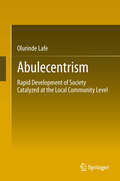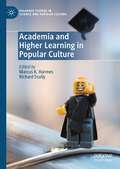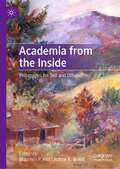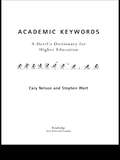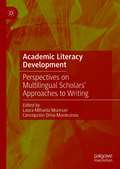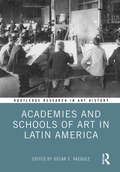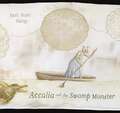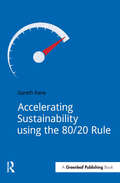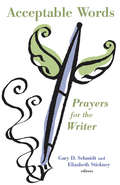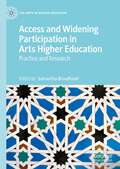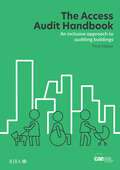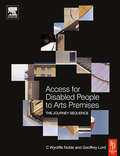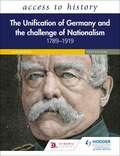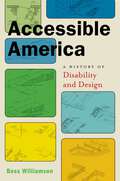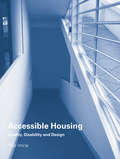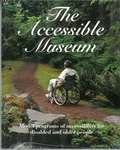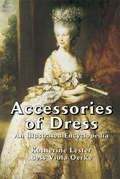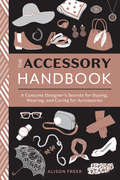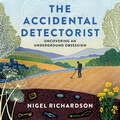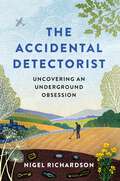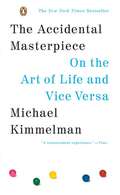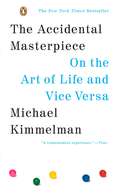- Table View
- List View
Abulecentrism: Rapid Development of Society Catalyzed at the Local Community Level
by Olurinde LafeThe book describes a development concept called abulecentrism. The Yoruba word abule (pronounced: a-boo-lay) literarily means "the village". abulecentrism seeks to achieve rapid and sustainable development of a given society by the strategic execution of projects and the provision of critical services at the local community level. The village has always been the traditional unit of communal living in many societies around the world. The typical village is small, comprising close-knit social groups and individuals that number in the tens, or at most, low hundreds. In a village, people live close to one another, and derive strength in their communal methods of living, working and protecting their society. Furthermore, the management and governance of the community is simpler than in urban areas because the village requires smaller administrative systems. abulecentrism is built on the philosophy of using small, modular systems, such as a village, as building blocks for developing the greater society. The ultimate goal of abulecentrism is for the larger society to be significantly impacted by the dividends of the aggregated development attained within the different communities. Development projects will typically be executed by starting with a few local communities and progressing organically until all the communities that make up the larger society have been impacted.
Academia and Higher Learning in Popular Culture (Palgrave Studies in Science and Popular Culture)
by Marcus K. Harmes Richard ScullyThis edited volume focuses on the cultural production of knowledge in the academy as mediated or presented through film and television. This focus invites scrutiny of how the academy itself is viewed in popular culture from The Chair to Terry Pratchett's ‘Unseen University’ and Doctor Who's Time Lord Academy among others. Spanning a number of genres and key film and television series, the volume is also inherently interdisciplinary with perspectives from History, Cultural Studies, Gender Studies, STEM, and more. This collection brings together leading experts in different disciplines and from different national backgrounds. It emphasises that even at a point of mass, global participation in higher education, the academy is still largely mediated by popular culture and understood through the tropes perpetuated via a multimedia landscape.
Academia from the Inside: Pedagogies for Self and Other
by Maureen P. Hall Aubrie K. BraultThis book invites readers to explore how fourteen different experts in their respective fields create deeper meaning in their profession and work with students through thinking, in multiple ways, about the self who teaches, the self who learns, and the ways in which these selves interact within the academy. Essays in this book explore the “inside” of academia through three themes: Pursuing Authenticity, Creating Creative Community, and Humanizing Education. Contributors reflect on their own lived experiences in the academy and on pedagogies that they have created for their students. Embodied education, the theoretical framework of this book, draws on ideas of educators Parker Palmer from the West and Dr. Chinmay Pandya from the East, emerging through contributors’ collaborative work. In embodied education, teachers and learners share experiences that lead to self-understanding and together find ways to humanize spaces in academia.
Academic Keywords: A Devil's Dictionary for Higher Education
by Cary Nelson Stephen WattKnow what academic freedom is? Or what it's come to mean? What's affirmative about affirmative action these days? Think you're up on the problem of sexual harassment on campus? Or know how much the university depends on part-time faculty? Academic Keywords is a witty, informed, and sometimes merciless assessment of today's campus, an increasingly corporatized institution that may have bitten off more than its administration is ready to chew. Cary Nelson and Steve Watt use the format of a dictionary to present stories and reflections on some of the most pressing issues affecting higher education in America. From the haphazard treatment of graduate students to the use and abuse of faculty (as well as abuses commited by faculty), Nelson and Watt present a compelling and, at times, enraging report on the state of the campus.
Academic Literacy Development: Perspectives on Multilingual Scholars' Approaches to Writing
by Laura-Mihaela Muresan Concepción Orna-MontesinosThis edited book brings together an international cast of contributors to examine how academic literacy is learned and mastered in different tertiary education settings around the world. Bringing to the fore the value of qualitative enquiry through ethnographic methods, the authors illustrate in-depth descriptions of genre knowledge and academic literacy development in first and second language writing. All of the data presented in the chapters are original, as well as innovative in the field in terms of content and scope, and thought-provoking regarding theoretical, methodological and educational approaches. The contributions are also representative of both novice and advanced academic writing experiences, providing further insights into different stages of academic literacy development throughout the career-span of a researcher. Set against the backdrop of internationalisation trends in Higher Education and the pressure on multilingual academics to publish their research outcomes in English, this volume will be of use to academics and practitioners interested in the fields of Languages for Academic Purposes, Applied Linguistics, Literacy Skills, Genre Analysis and Acquisition and Language Education.
Academies and Schools of Art in Latin America (Routledge Research in Art History)
by Oscar E. VázquezThis edited volume’s chief aim is to bring together, in an English-language source, the principal histories and narratives of some of the most significant academies and national schools of art in South America, Mexico, and the Caribbean, from the late 18th to the early 20th centuries. The book highlights not only issues shared by Latin American academies of art but also those that differentiate them from their European counterparts. Authors examine issues including statutes, the influence of workshops and guilds, the importance of patronage, discourses of race and ethnicity in visual pedagogy, and European models versus the quest for national schools. It also offers first-time English translations of many foundational documents from several significant academies and schools. This book will be of interest to scholars in art history, Latin American and Hispanic studies, and modern visual cultures.
Acadiana: Louisiana's Historic Cajun Country
by Philip Gould Carl A. Brasseaux"Acadiana" summons up visions of a legendary and exotic world of moss-draped cypress, cocoa-colored bayous, subtropical wildlife, and spicy indigenous cuisine. The ancestral home of Cajuns and Creoles, this twenty-two-parish area of south Louisiana encompasses a broad range of people, places, and events. In their historical and pictorial tour of the region, author Carl A. Brasseaux and photographer Philip Gould explore in depth this fascinating and complex world.As passionate documentarians of all things Cajun and Creole, Brasseaux and Gould delve into the topography, culture, and economy of Acadiana.In two hundred color photographs of architecture, landscapes, wildlife, and artifacts, Gould portrays the rich history still visible in the area, while Brasseaux's engagingly written narrative covers the eighteenth- and nineteenth-century story of settlement and development in the region. Brasseaux brings the story up to date, recounting devastating hurricanes and coastal degradation.From living-history attractions such as Vermilionville, the Acadian Village, and Longfellow-Evangeline State Park to music venues, festivals, and crawfish boils, Acadiana depicts a resilient and vibrant way of life and presents a vivid portrait of a culture that continues to captivate, charm, and endure.For all those who want to explore these people and this place, Brasseaux and Gould have provided an insightful written and visual history.
Accalia and the Swamp Monster
by Kelli Scott KelleyAs the author and artist of a heroine's surreal journey through a haunting southern landscape, Kelli Scott Kelley reveals the mastery of her craft and the strong narrative ability of her artwork. Borrowing from Roman mythology, Jungian analysis, and the psychology of fairy tales, Kelley presents a story of family dysfunction, atonement, and transformation.Reproductions of her artwork -- mixed-media paintings executed on repurposed antique linens -- punctuate the tale of Accalia, who is tasked with recovering the arms of her father from the belly of the swamp monster. Visually and metaphorically, Accalia's odyssey enchants and displaces as Kelley delicately balances the disquieting with the familiar. Rich in symbolism and expertly composed, Accalia and the Swamp Monster pulls readers into the physical realm through Kelley's chimerical imagery and then pushes them towards the inner world of the subconscious. To that end, Kelley's story is accompanied by essays from Jungian analyst Constance Romero and art historian Sarah Bonner.A culmination of nearly a decade of work, introspection, and research, Accalia and the Swamp Monster is both an entrancing display of Kelley's art and an affirmation of the transformative power of fairy tales.
Accelerating Sustainability Using the 80/20 Rule
by Gareth KaneAre your sustainability efforts making as much impact as they could be?With our collective way of life rubbing up against the natural limits of the planet, it does not take a genius to see that it is time to scrape the mud off our boots and find a shorter, smarter path towards sustainability – a way to maximize our effectiveness and inspire leaps forward in sustainability, rather than incremental steps. The 80/20 rule says that, in many situations, a small number of inputs determine the vast majority of our desired results. If we identify these “vital few” inputs in our sustainability efforts, and focus on them, we can maximize our effectiveness and accelerate progress rapidly. This book will help you to think about sustainability from an 80/20 perspective with practical applications for: product and service development; supply chains; materiality, indicators and quantitative analysis; waste, energy efficiency, water conservation and transport; employee engagement and sustainability strategy. If you want to focus on what works, deliver better results, waste less time on “switch it off” stickers and ineffective “standard practice” and start making a real difference, then this book is for you!
Acceptable Words: Prayers for the Writer
by Gary Schmidt Elizabeth StickneyAcceptable Words offers prayers that correspond with each stage of the writer's work -- from finding inspiration to penning the first words to "offering it to God" at completion. Gary Schmidt and Elizabeth Stickney, experienced writers themselves, introduce each chapter of prayers with pithy pastoral reflections that will encourage writers in their craft.This welcome spiritual resource for writers includes both ancient and contemporary poems and prayers -- some of which were written especially for this volume. A thoughtful gift for any writer, Acceptable Words will accompany writers on their spiritual journey, lending words of praise and petition specifically crafted to suit their unique vocation.Watch the trailer:
Access and Widening Participation in Arts Higher Education: Practice and Research (The Arts in Higher Education)
by Samantha BroadheadThis volume brings together a range of practitioners, managers, and researchers who work within the field of arts higher education to reflect on strategies to increase access and widening participation (WP). The issues presented in this book are situated within a wider global context where countries are seeking greater harmonisation of higher education as students and workers become more mobile, crossing international borders. The chapter authors address various issues within higher education institutions from a WP context, including areas such as creative writing, music, art and design. In exploring these issues the editor and her chapter authors seek to answer how those teaching in arts higher education can promote the value and quality of their work while ensuring fair access and wide participation for all.
The Access Audit Handbook: An inclusive approach to auditing buildings
by (CAE) Centre for Accessible EnvironmentsOur buildings and environments should be inclusive to all, but how can we assess this? The Access Audit Handbook is an indispensable tool for auditing the accessibility of buildings and services. This book offers straightforward advice about undertaking access audits and explains how they make buildings, environments and services more inclusive. Following the audit, the book explains how each of the various report formats works best to communicate recommendations in the content of current legislation, funding requirements and best practice in building management. Well established as the best resource for conducting access audits, the third edition of The Access Audit Handbook is fully up to date with the latest legal and technical standards as well as developments in equipment and building maintenance. Featuring advice on: Commissioning an access audit Audit methodology Making recommendations Report writing The practical guidance is supported by case studies, worked examples and checklists.
Access for Disabled People to Arts Premises: The Journey Sequence
by Geoffrey Lord C Wycliffe NobleIllustrating actual building design solutions that have been created to improve accessibility for disabled patrons and performers, the 'Journey Sequence' outlines the best examples of design innovation produced in response to new and upcoming legislation.A knowledge of how to design for the disabled can be crucial in winning contracts and having designs accepted. This book shows how the practical implications have already been successfully approached.Covering the whole sequence from parking, to entry, and including details of facilities for the visually and hearing impaired users, advice is given on the methods designers should use in assessing the requirements of disabled people. This is not a publication giving theoretical prescription but rather an illustrated record of achievements in buildings of all sizes where proper access to the disabled has been created. It includes 14 case studies and examples that illustrate the diverse ways that accessibility has been incorporated into arts buildings throughout the UK. This includes Cinemas, Theatres, Concert Halls, Opera Houses, Museums and Libraries. The author team highlights specific design details that are particularly unique, to stimulate the reader and show that creating better accessibility for the disabled both demands and creates innovative design.
Access to History: The Unification of Germany and the Challenge of Nationalism 1789–1919, Fifth Edition
by Vivienne SandersExam board: Pearson Edexcel; OCRLevel: AS/A-levelSubject: HistoryFirst teaching: September 2015First exams: Summer 2016 (AS); Summer 2017 (A-level)Put your trust in the textbook series that has given thousands of A-level History students deeper knowledge and better grades for over 30 years.Updated to meet the demands of today's A-level specifications, this new generation of Access to History titles includes accurate exam guidance based on examiners' reports, free online activity worksheets and contextual information that underpins students' understanding of the period.- Develop strong historical knowledge: In-depth analysis of each topic is both authoritative and accessible- Build historical skills and understanding: Downloadable activity worksheets can be used independently by students or edited by teachers for classwork and homework- Learn, remember and connect important events and people: An introduction to the period, summary diagrams, timelines and links to additional online resources support lessons, revision and coursework- Achieve exam success: Practical advice matched to the requirements of your A-level specification incorporates the lessons learnt from previous exams- Engage with sources, interpretations and the latest historical research: Students will evaluate a rich collection of visual and written materials, plus key debates that examine the views of different historians
Access to History: The Unification of Germany and the Challenge of Nationalism 1789–1919, Fifth Edition
by Vivienne SandersExam board: Pearson Edexcel; OCRLevel: AS/A-levelSubject: HistoryFirst teaching: September 2015First exams: Summer 2016 (AS); Summer 2017 (A-level)Put your trust in the textbook series that has given thousands of A-level History students deeper knowledge and better grades for over 30 years.Updated to meet the demands of today's A-level specifications, this new generation of Access to History titles includes accurate exam guidance based on examiners' reports, free online activity worksheets and contextual information that underpins students' understanding of the period.- Develop strong historical knowledge: In-depth analysis of each topic is both authoritative and accessible- Build historical skills and understanding: Downloadable activity worksheets can be used independently by students or edited by teachers for classwork and homework- Learn, remember and connect important events and people: An introduction to the period, summary diagrams, timelines and links to additional online resources support lessons, revision and coursework- Achieve exam success: Practical advice matched to the requirements of your A-level specification incorporates the lessons learnt from previous exams- Engage with sources, interpretations and the latest historical research: Students will evaluate a rich collection of visual and written materials, plus key debates that examine the views of different historians
Accessible America: A History of Disability and Design (Crip #2)
by Bess WilliamsonA history of design that is often overlooked—until we need it Have you ever hit the big blue button to activate automatic doors? Have you ever used an ergonomic kitchen tool? Have you ever used curb cuts to roll a stroller across an intersection? If you have, then you’ve benefited from accessible design—design for people with physical, sensory, and cognitive disabilities. These ubiquitous touchstones of modern life were once anything but. Disability advocates fought tirelessly to ensure that the needs of people with disabilities became a standard part of public design thinking. That fight took many forms worldwide, but in the United States it became a civil rights issue; activists used design to make an argument about the place of people with disabilities in public life. In the aftermath of World War II, with injured veterans returning home and the polio epidemic reaching the Oval Office, the needs of people with disabilities came forcibly into the public eye as they never had before. The U.S. became the first country to enact federal accessibility laws, beginning with the Architectural Barriers Act in 1968 and continuing through the landmark Americans with Disabilities Act in 1990, bringing about a wholesale rethinking of our built environment. This progression wasn’t straightforward or easy. Early legislation and design efforts were often haphazard or poorly implemented, with decidedly mixed results. Political resistance to accommodating the needs of people with disabilities was strong; so, too, was resistance among architectural and industrial designers, for whom accessible design wasn’t “real” design. Williamson provides an extraordinary look at everyday design, marrying accessibility with aesthetic, to provide an insight into a world in which we are all active participants, but often passive onlookers. Richly detailed, with stories of politics and innovation, Bess Williamson’s Accessible America takes us through this important history, showing how American ideas of individualism and rights came to shape the material world, often with unexpected consequences.
Accessible Housing: Quality, Disability and Design
by Rob ImrieConsidering the interrelationships between disability and housing design with a focus on the role of policy in addressing the housing needs of disabled people, this book sets out some of the broader debates about the nature of housing, quality and design. In what ways are domestic design and architecture implicated in inhibiting or facilitating mobility and movement of people? What is the nature of government regulation and policy in relation to the design of home environments? The author addresses these questions, and brings a range of approaches to accessible design in housing to the forefront of debate, assessing how far policies and practices are equal to the challenge of creating accessible and desirable home environments.
The Accessible Museum Model Programs of Accessibility for Disabled and Older People
by American Association of MuseumsA very interesting guide to museums of all kinds, which cater to accessibility for disabled and older people.
Accessories of Dress: An Illustrated Encyclopedia
by Bess Viola Oerke Katherine LesterDrawing upon a vast number of historical sources, the authors of this useful reference have created an entertaining account of the forms of personal adornment men and women have used throughout the ages to enhance their wearing apparel. From hats, veils, wigs, and cosmetics, to cravats, shawls, shoes, and gloves, to walking sticks, handbags, fans, and furs, the engaging commentary displays the humor and personal charm of the many-sided story of accessorized apparel. 644 figures and 59 plates.
The Accessory Handbook: A Costume Designer's Secrets for Buying, Wearing, and Caring for Accessories
by Alison FreerA practical and inspiring guide to how to style, wear, buy, and care for every kind of accessory, from the New York Times best-selling author of How to Get Dressed.Costume designer and writer Alison Freer is beloved for her sassy, rule-breaking fashion advice, which emphasizes that style should be fun, personal, and functional. Instead of prescribing what to wear or own, Freer empowers you to wear whatever you want—and shows how to pull it off—with humor and wit. In The Accessory Handbook, Freer breaks down every type of accessory—from hats and hosiery to jewelry, bags, and shoes—and explains how to best shop for, care for, and wear each with flair.
The Accidental Detectorist: Uncovering an Underground Obsession
by Nigel RichardsonWhen a travel writer is stuck on home soil in the middle of a pandemic he meets Kris Rodgers, one of Britain's eminent metal detectorists. Dipping a toe in the hobby, Nigel quickly finds himself swept up in the world beneath the surface. Above the ground are a cast of fascinating and passionate people who open Nigel's eyes to a subterranean world of treasure and stories that bring the history of the island to life.Scouring the country from Cornwall to Scotland in search of treasure and the best detectorists, Nigel finds himself more immersed in the culture than he bargained for and makes his own personal journey from cynicism to obsession in his trail through the heartlands of metal detecting. From women's groups who react against the hobby's male bias, to the 'Nighthawks' who risk jail-time in their pursuits, he finds his preconceptions disabused and gets to the heart of what makes this quiet community so obsessed with happy beeps.(p) 2022 Octopus Publishing Group
The Accidental Detectorist: Uncovering an Underground Obsession
by Nigel Richardson'Richardson writes beautifully about his return to the land, about listening to the soil and about understanding the ancient world.' - The SpectatorEach new field is hope, each old one reality.There are things below the surface that pull people together in a shared love of history, landscape and the hope that, this time, something incredible will be unearthed.When a travel writer is stuck on home soil in the middle of a pandemic he tries his hand at metal detecting - and is instantly addicted. This all-consuming hobby takes him around the country, back through history and deep into the psyches(his own included) of those hooked on 'happy bleeps'.The Accidental Detectorist is a big-hearted dig into a pastime sometimes mocked but always enticing.***When locked-down travel writer Nigel Richardson is looking for a travel story close to his country cottage he turns to a leading metal detectorist with an infectious passion for the hobby. Before he knows it the mysteries of the fields are leading him on, into a world that casts the history of these isles and its people in an intriguing new light.Sifting Britain's soil from Portsmouth to Edinburgh, Nigel yearns to lose his detectorist's virginity by finding a 'hammered' coin - while learning that the search for treasure comes with a serious responsibility to our common heritage. As he immerses himself further in the world of metal detecting, exposing the shady activities of 'nighthawks', attending rallies and making lifelong friends, a change comes over him. This country beneath his feet, these people who scour it for clues and tokens - they are the home he's been looking for.
The Accidental Detectorist: Uncovering an Underground Obsession
by Nigel Richardson'Richardson writes beautifully about his return to the land, about listening to the soil and about understanding the ancient world.' - The SpectatorEach new field is hope, each old one reality.There are things below the surface that pull people together in a shared love of history, landscape and the hope that, this time, something incredible will be unearthed.When a travel writer is stuck on home soil in the middle of a pandemic he tries his hand at metal detecting - and is instantly addicted. This all-consuming hobby takes him around the country, back through history and deep into the psyches(his own included) of those hooked on 'happy bleeps'.The Accidental Detectorist is a big-hearted dig into a pastime sometimes mocked but always enticing.***When locked-down travel writer Nigel Richardson is looking for a travel story close to his country cottage he turns to a leading metal detectorist with an infectious passion for the hobby. Before he knows it the mysteries of the fields are leading him on, into a world that casts the history of these isles and its people in an intriguing new light.Sifting Britain's soil from Portsmouth to Edinburgh, Nigel yearns to lose his detectorist's virginity by finding a 'hammered' coin - while learning that the search for treasure comes with a serious responsibility to our common heritage. As he immerses himself further in the world of metal detecting, exposing the shady activities of 'nighthawks', attending rallies and making lifelong friends, a change comes over him. This country beneath his feet, these people who scour it for clues and tokens - they are the home he's been looking for.
The Accidental Masterpiece: On The Art Of Life And Vice Versa
by Michael KimmelmanA New York Times bestseller—a dazzling and inspirational survey of how art can be found and appreciated in everyday life. Michael Kimmelman, the prominent New York Times writer and a regular contributor to The New York Review of Books, is known as a deep and graceful writer across the disciplines of art and music and also as a pianist who understands something about the artist's sensibility from the inside. Readers have come to expect him not only to fill in their knowledge about art but also to inspire them to think about connections between art and the larger world - which is to say, to think more like an artist. Kimmelman's many years of contemplating and writing about art have brought him to this wise, wide-ranging, and long-awaited book. It explores art as life's great passion, revealing what we can learn of life through pictures and sculptures and the people who make them. It assures us that art - points of contact with the exceptional that are linked straight to the heart - can be found almost anywhere and everywhere if only our eyes are opened enough to recognize it. Kimmelman regards art, like all serious human endeavors, as a passage through which a larger view of life may come more clearly into focus. His book is a kind of adventure or journey. It carries the message that many of us may not yet have learned how to recognize the art in our own lives. To do so is something of an art itself. A few of the characters Kimmelman describes, like Bonnard and Chardin, are great artists. But others are explorers and obscure obsessives, paint-by-numbers enthusiasts, amateur shutterbugs, and collectors of strange odds and ends. Yet others, like Charlotte Solomon, a girl whom no one considered much of an artist but who secretly created a masterpiece about the world before her death in Auschwitz, have reserved spots for themselves in history, or not, with a single work that encapsulates a whole life. Kimmelman reminds us of the Wunderkammer, the cabinet of wonders - the rage in seventeenth-century Europe and a metaphor for the art of life. Each drawer of the cabinet promises something curious and exotic, instructive and beautiful, the cabinet being a kind of ideal, self-contained universe that makes order out of the chaos of the world. The Accidental Masterpiece is a kind of literary Wunderkammer, filled with lively surprises and philosophical musings. It will inspire readers to imagine their own personal cabinet of wonders.
The Accidental Masterpiece: On the Art of Life and Vice Versa
by Michael KimmelmanA New York Times bestseller—a dazzling and inspirational survey of how art can be found and appreciated in everyday lifeMichael Kimmelman, the prominent New York Times writer and a regular contributor to The New York Review of Books, is known as a deep and graceful writer across the disciplines of art and music and also as a pianist who understands something about the artist's sensibility from the inside. Readers have come to expect him not only to fill in their knowledge about art but also to inspire them to think about connections between art and the larger world - which is to say, to think more like an artist. Kimmelman's many years of contemplating and writing about art have brought him to this wise, wide-ranging, and long-awaited book.It explores art as life's great passion, revealing what we can learn of life through pictures and sculptures and the people who make them. It assures us that art - points of contact with the exceptional that are linked straight to the heart - can be found almost anywhere and everywhere if only our eyes are opened enough to recognize it. Kimmelman regards art, like all serious human endeavors, as a passage through which a larger view of life may come more clearly into focus. His book is a kind of adventure or journey.It carries the message that many of us may not yet have learned how to recognize the art in our own lives. To do so is something of an art itself. A few of the characters Kimmelman describes, like Bonnard and Chardin, are great artists. But others are explorers and obscure obsessives, paint-by-numbers enthusiasts, amateur shutterbugs, and collectors of strange odds and ends. Yet others, like Charlotte Solomon, a girl whom no one considered much of an artist but who secretly created a masterpiece about the world before her death in Auschwitz, have reserved spots for themselves in history, or not, with a single work that encapsulates a whole life.Kimmelman reminds us of the Wunderkammer, the cabinet of wonders - the rage in seventeenth-century Europe and a metaphor for the art of life. Each drawer of the cabinet promises something curious and exotic, instructive and beautiful, the cabinet being a kind of ideal, self-contained universe that makes order out of the chaos of the world. The Accidental Masterpiece is a kind of literary Wunderkammer, filled with lively surprises and philosophical musings. It will inspire readers to imagine their own personal cabinet of wonders.
